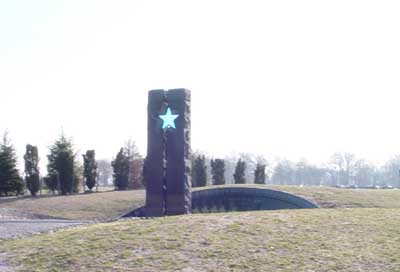Wolfe's Pond Park
Wolfe’s Pond Park
The landscape of Wolfe’s Pond Park on Raritan Bay is rich in history, both natural and manmade. The beach was formed nearly 20,000 years ago during the last part of the ice age. The Wisconsin ice sheet transported enormous amounts of clays, sands, and gravels south and deposited them along the shores of Staten Island. The freshwater Wolfe’s Pond was once a tidal inlet, but the gradual action of wind and waves pushed sand and clay into the mouth of the inlet, damming it and forming a pond. It is connected by a stream to Acme Pond, which was formed as the Wisconsin ice sheet retreated, leaving a large chunk of ice behind. As the chunk melted, it made a permanent depression, or kettle hole pond, filled with water.
The rich marine and freshwater resources, bordered by lush woodlands, made this area a very desirable location for human settlement. About 6000 years ago, ancestors of the Algonquian Lenape people established camps on bluffs overlooking Raritan Bay, where they collected fish and shellfish, hunted deer and turkey, and cultivated squash and corn. In the 1700s European colonists arrived in the area and developed a thriving oyster-harvesting industry, selling to American and even European markets. Prominent Staten Island families bought farmland here, including the Johnsons, the Seguines, and the Wolfes—for whom the pond is named.
In 1857 the State of New York purchased the Wolfe Farm for use as a quarantine station for sick immigrants. Local fishermen and oystermen suspected that the facility was contaminating the water. They burned down one building after another in protest. As a result, the quarantine station was relocated to Tompkinsville (and later to Hoffman and Swinburne Islands), and the State established a burial ground on the site. The land was sold to a private developer in 1907.
When the City acquired land for Wolfe’s Pond Park in 1929-30, it was already a popular recreational spot for the people of Staten Island and visitors from other boroughs of New York City and from New Jersey. More than ninety bungalows and summer cottages surrounded the pond. As a result of community protest in 1933, the buildings were razed and substantial park improvements were undertaken. A new dam was built to protect the freshwater pond from the infusion of salt water from the bay. A boat house, bath house, stairs to the beach, a parking lot, playground, and picnic area were constructed. Additional parcels of land expanded the park to its present acreage. After winter storms in 1992 breached the berm separating Wolfe’s Pond from the ocean, Mayor Giuliani and Borough President Molinari funded three major capital projects, which were completed between 1995 and 1998. The $1,200,000 construction of a pond embankment and beach protection included installing a planted berm and a new weir. The $1,112,665 reconstruction of the picnic area and parking lot provided new lawns, trees, shrubs, play equipment, picnic areas, benches, paths, pavements, and drainage and lighting systems. The most recent $1,500,000 reconstruction project included a picnic area, tot lot, tennis courts, basketball courts, roller hockey rink, pedestrian paths, sitting areas, and shoreline protection.

Check out your park's Vital Signs
Clean & Safe
Green & Resilient
Empowered & Engaged Users
Share your feedback or learn more about how this park is part of a
Vital Park System










